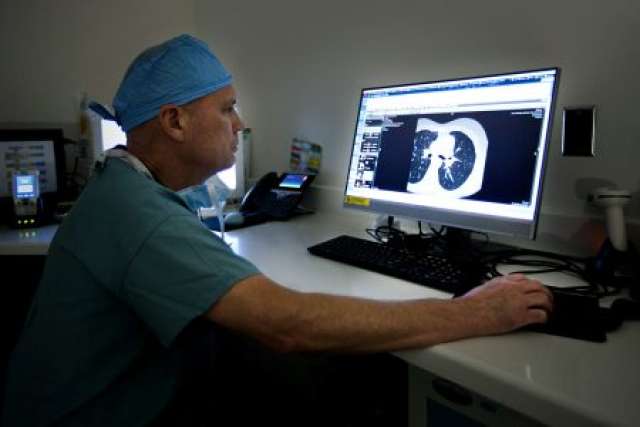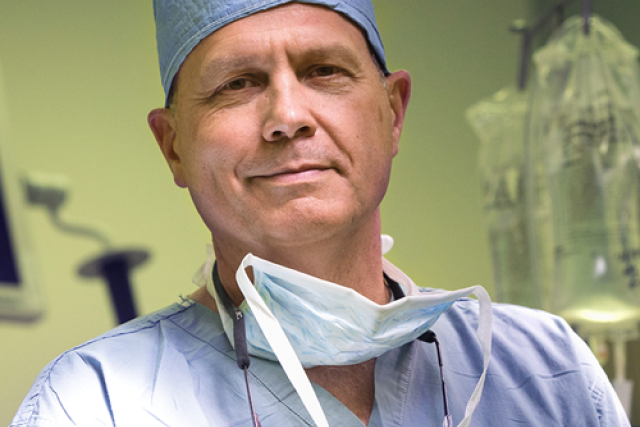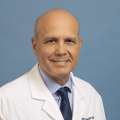There was a time Glen Van Arsdell, MD, director of pediatric cardiac surgery at UCLA Health, wanted to be a fireman or a chicken farmer. Those were unusual choices for a boy who spent his formative years in Thailand with parents who were medical missionaries.
His father, a surgeon by training, provided his patients with everything from medicine to obstetrics to cancer care. Dr. Van Arsdell and his siblings spent a lot of time tagging along with their father to medical clinics in the villages of Thailand. Through observation, they saw the difference a medical professional can make in the lives of people.
“And of course, I had my share of traumas as a kid, so my dad was always suturing me up and giving me shots.”
The family returned to the United States when Dr. Van Arsdell was 11, but those years of having direct exposure to the merits of medicine left a lasting mark.
“We’re imprinted by our parents,” says Dr. Van Arsdell. “So, when I hit my decision-making years, it was clear what I was going to do.”
Becoming a Congenital Heart Surgeon
“I joke that I used to be interesting — before I became a surgeon,” says Dr. Van Arsdell, who was passionate about music in high school.
“When I was in high school, music was my life. I played three instruments and dabbled in others. I directed the band and ran a brass choir,” says Dr. Van Arsdell. “The thing music taught me was how to learn. To do well on exams, you apply the same principles of practice and repetition. To become a master of the instrument and the piece, you practice a measure or two at a time. It takes patience and dedication.”
If his family’s work in Thailand was what piqued his interest in medicine, it was his love of music that gave him the tools to succeed. As with music, Dr. Van Arsdell practiced and honed his technique to become a master of congenital heart surgery.
Fast forward to medical school, which Dr. Van Arsdell attended during a pivotal time for cardiac surgery. “We’d go into the anatomy lab and talk about the first artificial heart transplant — the Jarvik heart — being performed. It was an exciting and memorable time.”
Dr. Van Arsdell started working in a research lab after his freshman year. In that same lab, they were doing research on transplantation of a heart between different species, specifically placing lamb hearts into goats. It was in this lab that Dr. Van Arsdell came to know the surgeon named Leonard Bailey, MD, who later performed a famous surgery when he transplanted a baboon heart into a human infant known as Baby Fae. A year later, Dr. Bailey performed the first successful baby-to-baby heart transplant.
As a surgery resident, Dr. Van Arsdell partnered with Dr. Bailey in his lab. He also served as an assistant on one of the early successful newborn heart transplants performed by Dr. Bailey.
“Dr. Bailey was the real reason I choose congenital heart surgery as my career path,” says Dr. Van Arsdell. “He taught me the importance of expertise and our moral obligation to always strive to do it better. I’m forever in his debt for teaching me not only the mechanics of heart surgery, but the art in it.”
It Takes a Team of Specialists to Heal Broken Hearts
“You can’t get away from the fact that pediatric heart surgery is a life and death business. More than any other discipline, it takes multiple specialists to deliver superior care,” says Dr. Van Arsdell. “Our job is to work as a team and make critical decisions that meet the top standards of the day.”
The notion of value-based healthcare inspires Dr. Van Arsdell. He believes excellent outcomes come when you have a comprehensive team, including:
- Pediatric cardiologists
- Surgeons
- Anesthesiologists
- Intensive care physicians
- Imaging specialists
- Obstetricians
- Pediatricians
- Adult congenital cardiology specialists
- Specialty nurses
“These are separate departments with different reporting structures, so it takes people willing to find ways to overcome the barriers using goodwill and a strong desire to work together,” says Dr. Van Arsdell.
“That’s what we’re doing at UCLA — focusing heavily on how to do this operationally and scientifically. We’re finding ways to bring all these disparate parts of the hospital together to function as one unit.”
Using Science and Technology to Answer Questions of the Heart

Getting teams to work together is just one aspect of making care better tomorrow than it is today. Using modern tools and technology, Dr. Van Arsdell wants to solve prominent problems and questions in the field of pediatric heart surgery.
“UCLA is one of the most important brands in the world in terms of education, healthcare and research,” says Dr. Van Arsdell. “It is a robust academic environment on a small campus where scientists work next to the hospital. This setting is rich for research and translating technology into something that can drive our field forward.”
Dr. Van Arsdell spent the bulk of his career at The Hospital for Sick Children at the University of Toronto. It was there that he and colleagues developed soft-form 3D models of the heart they could use to perfect surgical techniques without even touching the patient. This type of innovation continues within the UCLA Children’s Heart Center, which is running clinical trials examining new devices, congenital valves and more.
Dr. Van Arsdell personally oversees an international study on tetralogy of Fallot, a congenital condition where four heart defects occur at the same time. Through this and continued studies, he and his team aim to create personalized care for each child born with tetraology of Fallot.
“Success is built not on individuals, but the system. We’re continuing to build this program so the next generation can stand on the shoulders of the work we’re doing today.”
Through it all, Dr. Van Arsdell never loses sight of the big picture:
“Because of the expertise and commitment of our team, we can give a baby who had a rough start the gift of health. There’s no greater reward than helping a child live a useful, fulfilling life with their family.”
Learn more about Dr. Van Arsdell and the Children’s Heart Center at UCLA Mattel Children’s Hospital.

